[kl-bogel] Durian, red cucumbers, Buddha's hand ... the 12 most exotic fruits and vegetables
| The purple carrots is shown in the figures presented in the Egyptian temple 2000 years BC. In the tenth century purple carrots were grown in Afghanistan, Pakistan and northern Iran. In the fourteenth century in southern Europe were imported raspberry, white and yellow varieties. Grown as black, red and green carrots. Recently, Dutch growers have learned useful properties of purple carrots. They believe that the vegetable purple color provides the body with additional protection against cancer and cardiovascular disease. 2. Black Tomato 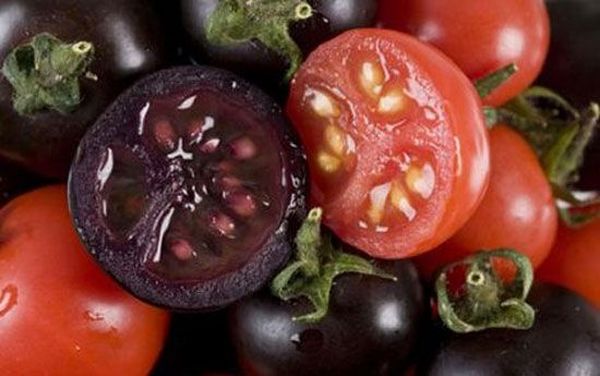 Unique varieties of tomatoes went on sale in the UK market. According to some experts, in the vegetable contains a substance many times intensifying sexual desire. New variety of black tomato called "kumato. This relative of the wild plants of Lycopersicon cheesmanii. In size it is the same as conventional tomatoes, but sweeter, and his skin brown and black. It took six years of research to improve this vegetable and start selling it in Europe. When the tomato was first cultivated by the Aztecs and Incas in the VIII century, they were not only red but also yellow, green, red, white and black. They were grown, where is now located Ecuador, Bolivia, Chile, Peru and Mexico. This cross between a tomato with BlackBerry is capable of 30% to extend the life of mice prone to colon cancer. In addition to the advantages enjoyed by the usual tomatoes - high levels of vitamin C and antioxidants. 3. Rainbow kale 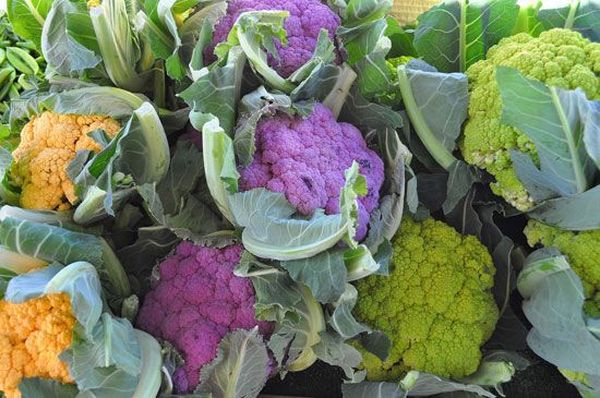 "Rainbow" cauliflower appeared in England. The British company Syngeta has launched a new variety of cauliflower - Rainbow Cauliflowers, inflorescences which are painted in bright orange, green and purple. The taste is exactly the same cabbage, but it adds color to the cooked food - a new variety does not lose its rich color even after cooking. Another advantage of most of cauliflower in the world, that the orange grade contains 25 times more beta carotene than in normal inflorescences, and full of purple anthocyanin, which is useful for the prevention of heart disease, because the slow blood clotting. A company representative, Andrew Coker said that the unusual colors of cabbage - not a product of genetic engineering, but the result of traditional breeding, which took more than a dozen years. 4. Strawberry Pineberry 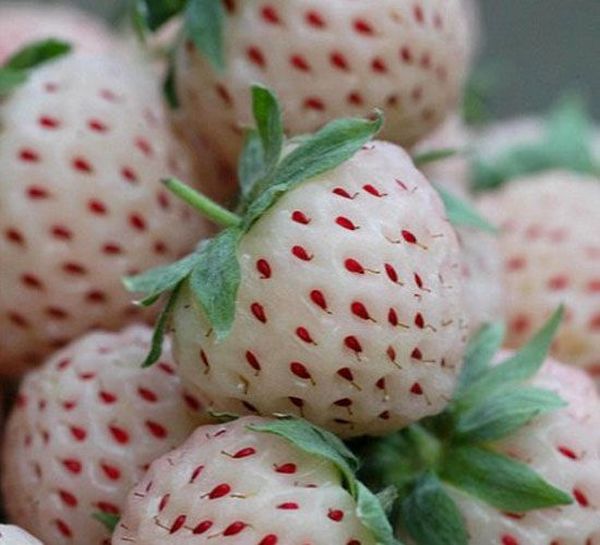 Birthplace of the fruit, which has the same genetic structure as the normal strawberry, but tastes and smells like a pineapple, is South America. There he found a Dutch farmer, and for seven years, successfully grown in greenhouses. Unique look was on the verge of extinction, when Dutch farmers have revived it in the greenhouses. In the immature form of green berries, and on their ripeness say white skin and red seeds. 5. Purple potatoes 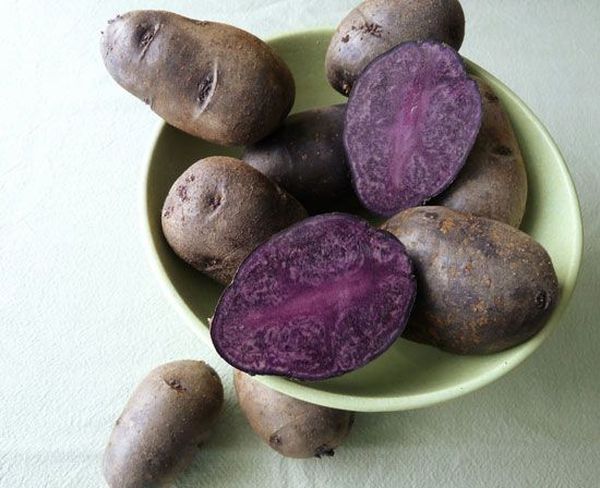 In the UK, in sale a new variety of potatoes, saturated purple. Violet also remain all derivatives of this vegetable - potato chips, mashed potatoes, etc. The potato, known as Purple Majesty, the taste is the same as his more familiar to us relatives, but full of anthocyanins - they give blueberries, blackberries and eggplant their distinctive colors. Cultivated a new variety in Scotland. This year has been collected about 400 tons of the crop, which is not very much, but next year, manufacturers plan to increase the rate. Blue potatoes are divided into several types. For example, the class Franzosische Truffel-kartoffel and Linzer Blaue during cooking do not lose their color, are dark blue and very much fall apart. Whereas the other two Linzer Roze and Kipfler long enough to prepare and not boiled soft, but the process of cooking lost its unusual color. They are usually used in raw form with Jerusalem artichoke in salads. 6. Red cucumber 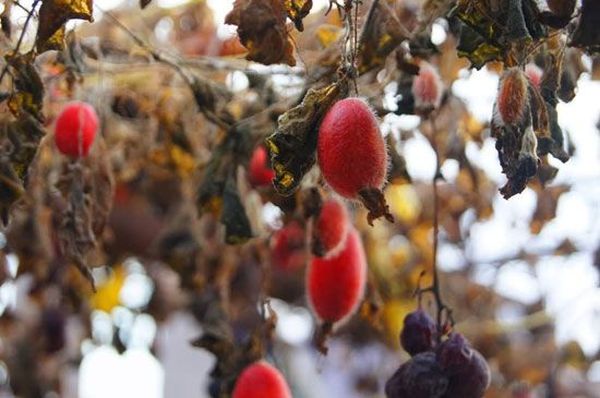 These vegetables are only conditionally called "red paisley. In fact, the classic cucumber, they have nothing in common. They have no taste and are used more for decorative purposes. This vegetable is in appearance very much like a cucumber, though the color he has a bright red. But it tastes just "no." In fact, this fruit belongs to the family Cucurbitaceae plants and is called "red cucumber" or "tladianta dubious." This miracle has been brought to Europe from Southeast Asia, and is considered more decorative plants than edible. However, if you put this beauty in his country house, a couple of years your whole garden will be a continuous thickets of red cucumber. 7. Romanescu 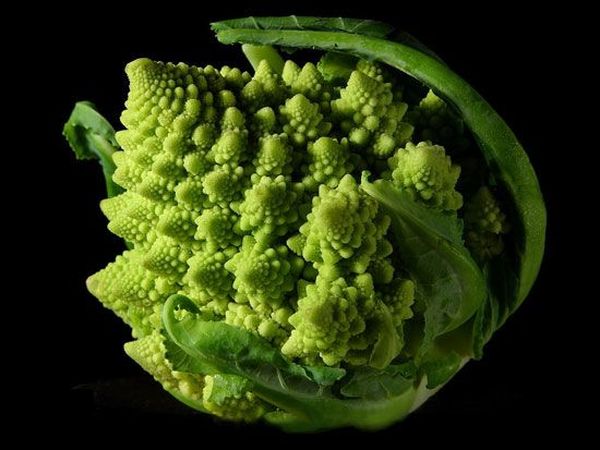 This is a close relative of broccoli and cauliflower. If you like cabbage, then this fantastic vegetables you will love. In addition, this wonderful vegetable, packed with antioxidants. Romanesque, or Romanesque broccoli, cauliflower coral cabbage. Designers and 3D-artists admired her exotic shapes are similar to fractals. Cabbage buds grow in a logarithmic spiral. The first mention of the cabbage Romanesque came from Italy 16 th century. Romanesque broccoli has the most naitonchashim taste, what might have cabbage. Romanesco is not crumbly, delicious broccoli, sweetish with a nutty, but not sulfur flavors. Fresh cabbage Romanesque should be stored in refrigerator for 4 days. Since cabbage is firm, cut cabbage into pieces serrated knife. With slices of cabbage Romanesque microwave ovens, served with a béchamel sauce and blue cheese. Cabbage is rich in Romanesque antioxidants carotenoids and vitamin C. This exotic vegetable is easy to grow for those who have experience in growing broccoli, as agrotechniques identical. 8. Kevan melon (Cucumis metuliferus)  Melon Kiwan (Antillean cucumber, horned melon, Angourie). Nods, countryman kiwi, native from Nova Zealand. Externally, the fetus resembles a yellow-orange cucumber with multiple horns. In fact, no nods to such formidable as it seems: spines are soft, the crust is not tight. The best way of eating fruit - cut it in half and vyhlebat green flesh. Nods like a cucumber and lemon at the same time - refreshing. It contains vitamins PP and vitamin C in it more than enough. Average fruit weight 300 g, the average length of 12 cm Fruits unusually decorative and can be used to create original compositions and even as Christmas tree decorations. 9. Buddha's hand 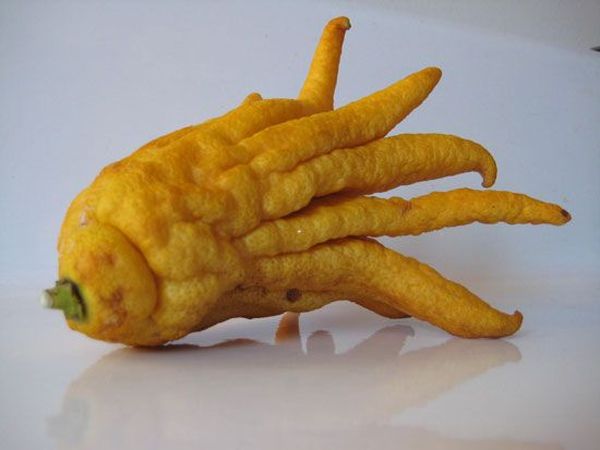 It is popular in Asia, the fruit of one of the members of the subfamily of citrus fruits (Rutaceae family). The contents of this fruit under a thick skin very much like a lemon. Has the largest of all citrus fruits. Their length is 20-40 cm diameter - 14-28 cm 10. Durian 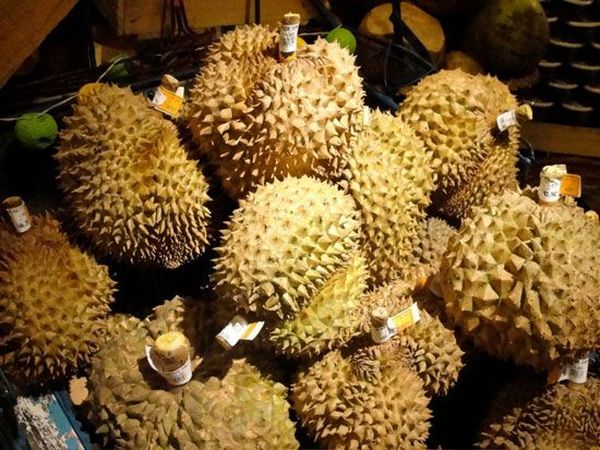 The fruit durian recalls some "alien" fruit of the size of a soccer ball, covered with stiff prickly rind. The pulp inside the fruit is pale yellow. Smell like a dirty worn socks, rotting meat or sewage (choose what you like). Nevertheless, this fruit tastes marvelous and elegant. The first European explorer who in the 1700's it was first tried this fruit called him the "king of fruits". "Worth it to go on a dangerous journey only in order to try this fruit" - added a courageous traveler. 11. Monstera (Monstera deliciosa) 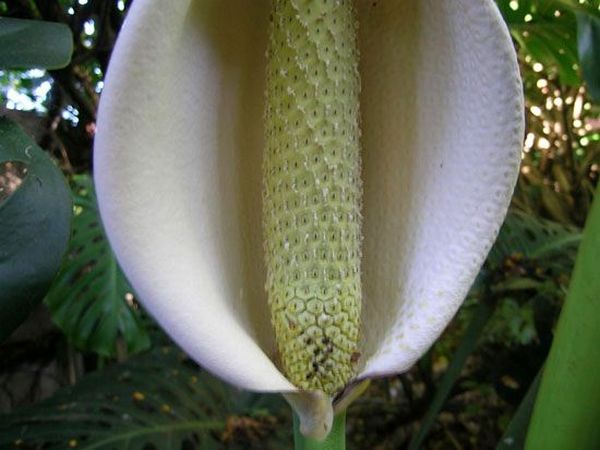 Monstera is growing in many homes. In nature, this plant produces delicious fruit. Mature fruit core monstera, despite the unpleasant pungent smell, taste like pineapple. 12. Star fruit 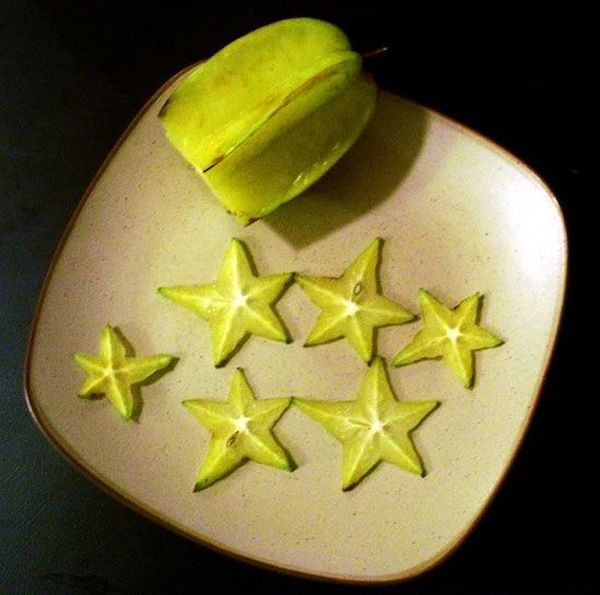 Transverse section of the fruit forms a nearly regular star. This fruit is juicy, sweet with a sour tinge. To taste like grapes, mango, lemon - all in one. In the structure contains a lot of oxalic acid, so do not abuse this fruit is recommended for people with kidney failure. Homeland fruit - Sri Lanka |
You received this message because you are subscribed to the Google Groups "kl-bogel" group.
To post to this group, send email to kl-bogel@googlegroups.com
To subscribe or unsubscribe at http://groups.google.com.my/group/kl-bogel/subscribe
For more options, visit this group at http://groups.google.com/group/kl-bogel?hl=en
Sebarang email pertanyaan, hantar kepada abangmod@gmail.com

Comments
Post a Comment